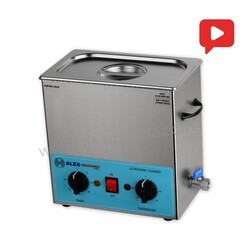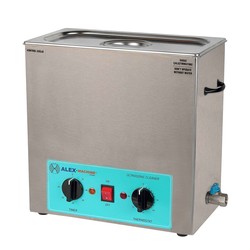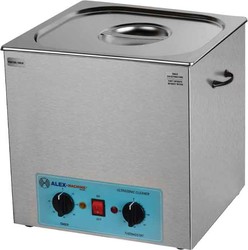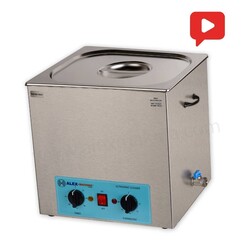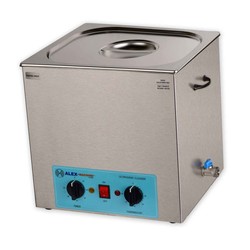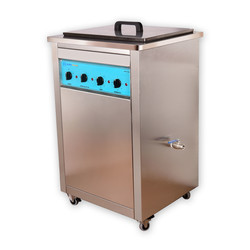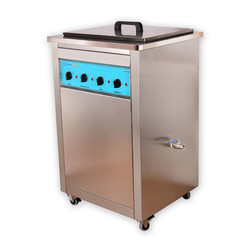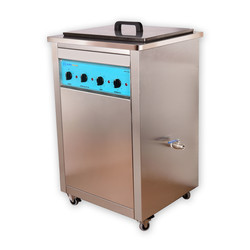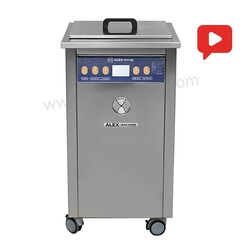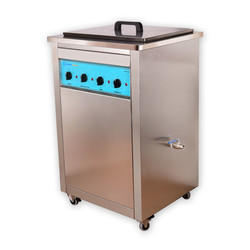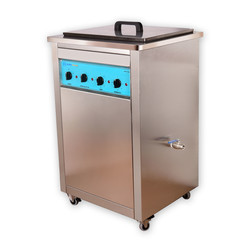Laboratory Ultrasonic Cleaners
Laboratory ultrasonic cleaners can be used to clean in tight spaces and small gaps that are difficult to clean manually with a brush. It eliminates the need for manual cleaning and cuts cleaning time in half. Metal, plastic, glass, ceramic, dirt, grease oil, and other materials are all cleaned with ultrasonic cleaners.
Laboratory Ultrasonic cleaners
Ultrasonic cleaners in scientific laboratories are important tools in analytical, quality control, research, and development labs. Laboratory ultrasonic cleaners designed with scientists in mind can clean intricate and delicate lab-ware and equipment with ease. Ultrasonic cleaners of this form can dissolve, disperse, and oxidize samples, as well as quickly degas chemicals.
Laboratory Ultrasonic Cleaners Volumes
We offer laboratory ultrasonic cleaner, ultrasonic bath sonicator, ultrasonic bath cleaners, ultrasonic bath with chiller, and pharma ultrasonic cleaners vacuums.
There are 9 best types of ultrasonic cleaners volumes. Check out our best laboratory ultrasonic cleaners’ selection:
- 4 Lt
- 6 Lt
- 8 Lt
- 12 Lt
- 18 Lt
- 30 Lt
- 50 Lt
- 80 Lt
- 100 Lt
How to Use?
Laboratories are one of the few places where an ultrasonic cleaner is needed. This is because using an ultrasonic cleaner would make keeping the apparatus clean easier and save time and effort. However, when using the ultrasonic cleaner in the laboratory, there are a few things to remember, particularly when dealing with materials like glass and plastic. Whatever you're cleaning in the lab and how much time it takes, the ultrasonic cleaner can finish the job faster than you. The ultrasonic cleaner is an expert at cleaning bottles, beakers, pipes, vials, and other laboratory equipment.
According to many reports, a laboratory ultrasonic cleaner will speed up the cleaning process by up to 60 times, and the best part is that the results are as perfect as you might imagine, even at such a high speed. Returning to the cleaning of laboratory apparatus, it is important to note that these instruments are important and essential to use. Any dirt or debris may affect the upcoming experiment. As a consequence, cleaning them is necessary. Always remember to wash all glass items after each use. Enable the glass to soak in water for an extended period if necessary. Soaking ensures that all stains are extracted from the bottle, which would otherwise be difficult to extract.
- When using the laboratory ultrasonic cleaner to clean glass objects, make sure the glass items are placed in the basket installed in the tank, so they don't touch the tank's bottom. Since the bottom is normally vibrating, it is best to hold glass away from it.
Tip: It's also important to remember that certain cleaning chemicals, such as highly alkaline detergents, can cause clouding, crazing, or cracking of plastic, so it's best to educate yourself about different materials and chemicals before using them.
Buying Tips for Your Demand
With these ten fingertips, you'll be on your way to finding the right laboratory ultrasonic cleaner for the job at the best price. The following are 10 buying tips for your demand:
- 1.Dimensions of the Ultrasonic Cleaner Tank
- 2.How do you make use of your laboratory ultrasonic cleaning system?
- 3.To your Ultrasonic Cleaner's Spec Sheet, add Baskets.
- 4.What Is Ultrasonic Frequency and How Do I Identify It?
- 5.What Is the Best Way to Control the Temperature of Ultrasonic Cleaning Solution?
- 6.Solution Preparation is sped up with the use of a Degas mode.
- 7.The Advantages of Wipe Mode
- 8.The Pulse Mode Increases Ultrasonic Power
- 9.Understanding Ultrasonic Power
- 10.Choosing Accessories
FAQ
1. What solution do you use in an ultrasonic cleaner?
De-ionized water – Any substance can safely be cleaned from this Ultrasonic Solution. Rubber, plastics, glass, fabrics, and metals will all benefit from de-ionized water.
2. What does an ultrasonic cleaner do?
The high-frequency soundwaves in the liquid are used for ultrasonic cleaning to encourage or improve the removal of external pollutants from surfaces soaked in ultrasonically activated liquids.
3. How effective are ultrasonic cleaners?
Ultrasonic cleaning is an important form of cleaning Plastics. It is extremely effective by using the best chemistry, cleaning cycle time, and temperature.
4. Does ultrasonic cleaner kill viruses?
These tiny bubbles expand and ultimately implode when they hit an object, and pollutants from even complexly formed surfaces discharge this energy. Ultrasonic cleaning has been recognized for some time with biological contaminants such as bacteria and viruses.
5. What can you not put in an ultrasonic cleaner?
Pearls and corals should not be placed in an ultrasonic cleaner, as should tortoiseshell, ivory, and shell. These chemicals are porous and should never be cleaned by an ultrasonic machine. They can be destroyed in most cleaning solutions by the heat of an ultrasonic cleaner and chemicals.
6. Can you use vinegar in an ultrasonic cleaner?
Typically, it is known as indirect ultrasound cleaning. Many people record good results in the ultrasonic cleaner diluting of vinegar with water to 1:1. Please ensure the metals are immediately rinsed with vinegar after ultrasound cleaning.
